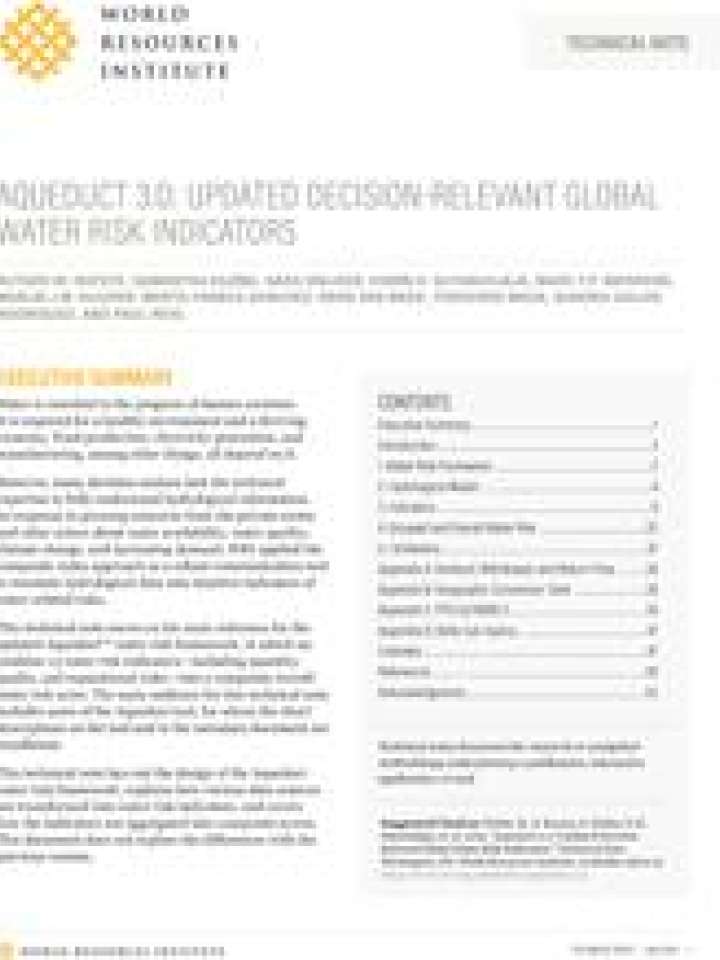Aqueduct 3.0: Updated decision-relevant global water risk indicators
Many decision-makers lack the technical expertise to fully understand hydrological information. In response to growing concerns from the private sector and other actors about water availability, water quality, climate change, and increasing demand, WRI applied the composite index approach as a robust communication tool to translate hydrological data into intuitive indicators of water-related risks. This technical note serves as the main reference for the updated Aqueduct™ water risk framework, in which researchers combined 13 water risk indicators—including quantity, quality, and reputational risks—into a composite overall water risk score. The main audience for this technical note includes users of the Aqueduct tool, for whom the short descriptions on the tool and in the metadata document are insufficient.
This technical note lays out the design of the Aqueduct water risk framework, explains how various data sources are transformed into water risk indicators, and covers how the indicators are aggregated into composite scores. This document does not explore the differences with the previous version.
The resulting database and online tools enable comparison of water-related risks across large geographies to identify regions or assets deserving of closer attention. Aqueduct 3.0 introduces an updated water risk framework and new and improved indicators. It also features different hydrological sub-basins. Moreover, the authors of this report introduce indicators based on a new hydrological model that now features (1) integrated water supply and demand, (2) surface water and groundwater modeling, (3) higher spatial resolution, and (4) a monthly time series that enables the provision of monthly scores for selected indicators. Key elements of Aqueduct, such as overall water risk, cannot be directly measured and therefore are not validated.
Explore further
